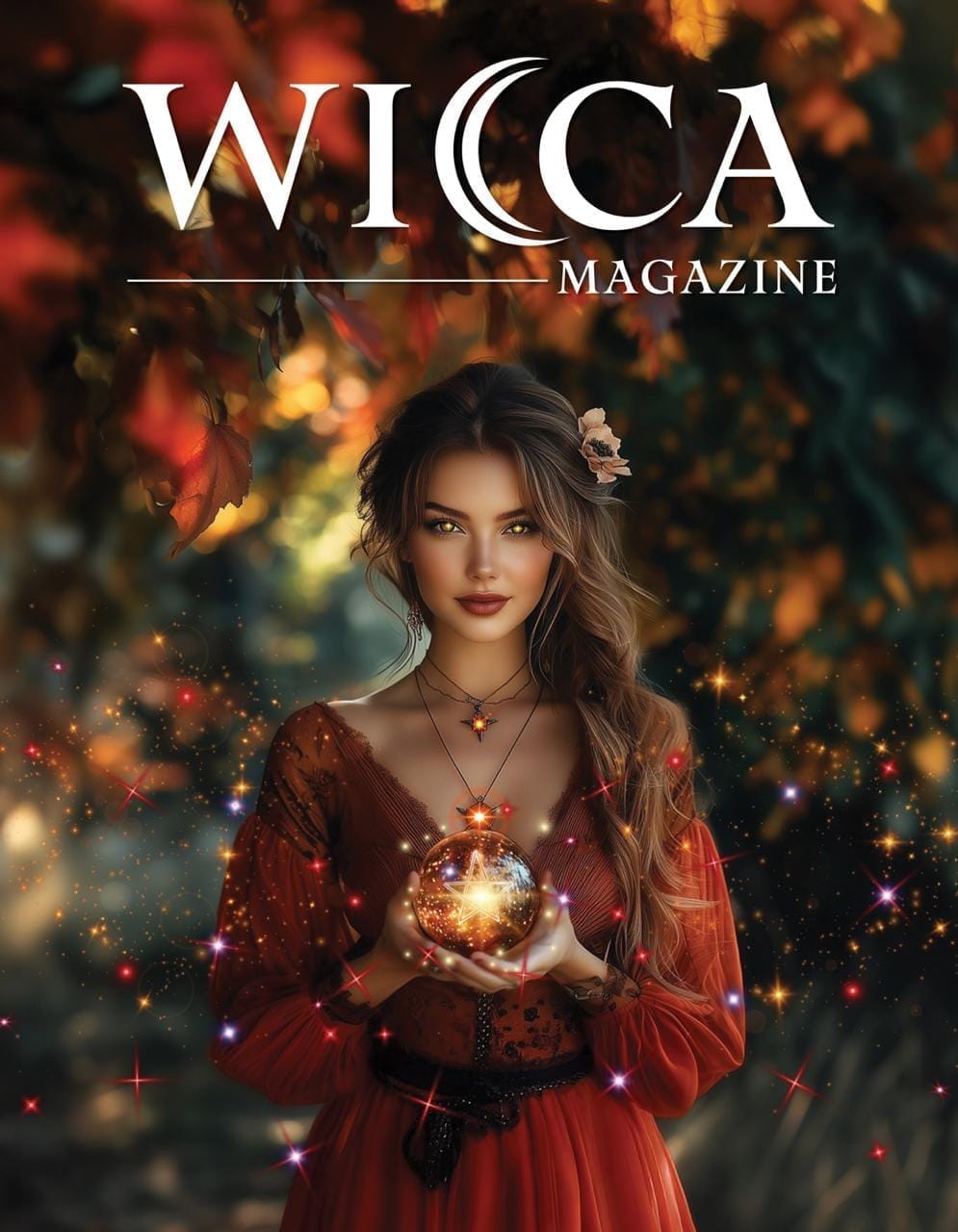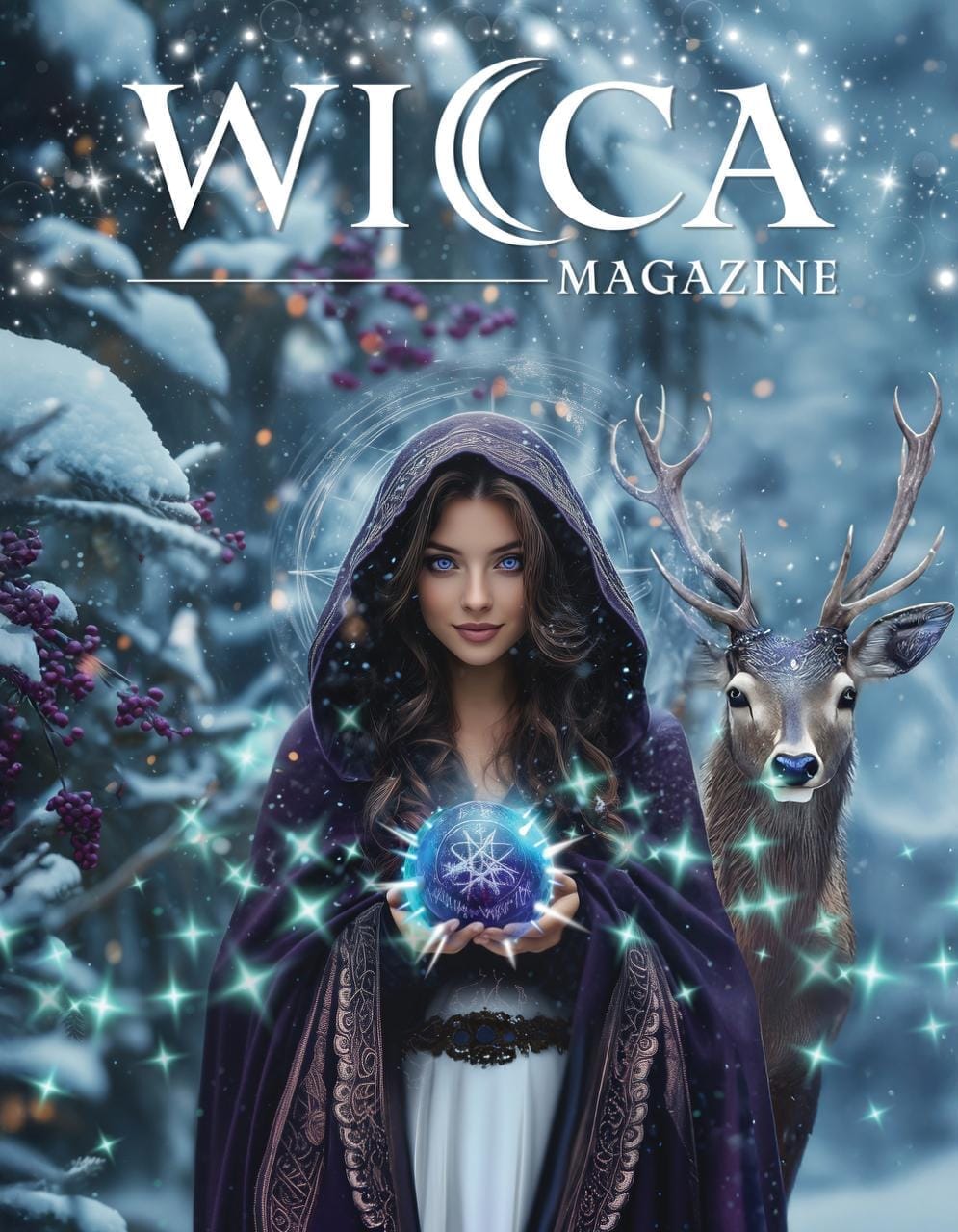


Unlock the Magick of Yule! - Your Wicca Magazine Issue Awaits
Step into the season of light with Wicca Magazine. Each digital issue is a sacred offering of spells, rituals, and Wiccan wisdom — honoring ancient paths and empowering your modern magick. Your craft, your journey, your magickal sanctuary.
As the chill of winter gives way to the warmth of spring, a joyous and colourful celebration emerges in many cultures around the world. May Day, also known as Beltane in the Wiccan calendar, marks this seasonal transition with a vibrant and timeless tradition: dancing around the maypole. This age-old ritual is not just a merry dance; it carries with it a rich history and modern interpretations that connect us to the rhythms of nature and the joy of communal festivities. Join me as we unravel the history and explore the contemporary significance of dancing around the maypole.
The Roots of Maypole Dancing
Maypole dancing, a colourful and lively celebration associated with the arrival of spring and the blossoming of life, traces its origins to ancient fertility rites and seasonal festivities dating back millennia. This cherished tradition has deep historical roots, offering a captivating glimpse into humanity's enduring connection with nature's cycles.
The central symbol of maypole dancing, the maypole itself, stands tall as a wooden pole adorned with a vibrant array of flowers, ribbons, and other decorative elements. Its phallic shape symbolizes the masculine essence of fertility, signifying the resurgence of life after the dormancy of winter. The ribbons and floral embellishments represent the feminine energies of spring, the Earth awakening and embracing the warmth of the sun.
In Celtic traditions, particularly within the Beltane celebrations, maypole dancing held profound significance. Beltane marked the commencement of the pastoral summer season when herds of cattle were driven to their summer pastures. The dance around the maypole was a central ritual, representing the sacred union of the May Queen and the Green Man, embodying the fertility of the Earth and the life force that surged through it.
As these traditions traversed through time and across cultures, maypole dancing continued to evolve and adapt, maintaining its core symbolism of fertility, renewal, and unity with the natural world. While variations exist in the specific customs and rituals associated with maypole dancing, its enduring essence remains a testament to the timeless connection between humanity and the ever-renewing cycles of the Earth.
Myths and Legends Enveloping the Maypole
The maypole, with its tall and adorned presence, has not only been a symbol of joyous celebration but has also woven itself into the tapestry of myths and legends that span across cultures and time periods. These enchanting stories add depth and mystique to the tradition of maypole dancing.
The Sacred Marriage
In many ancient cultures, maypole dancing symbolized the sacred union between the Earth Goddess and the Green Man, a fertility deity. This mythic tale portrays the Earth awakening from her winter slumber, greeted by the virile energies of the Green Man. Their union ensures the rebirth and flourishing of life, a theme echoed in the dance around the maypole.
The Battle of the Oak and Holly Kings
In some traditions, the maypole is seen as a representation of the cosmic struggle between the Oak King and the Holly King. The Oak King, associated with the waxing year and abundance, battles the Holly King, who rules the waning year and winter's chill. The maypole dance is believed to tip the cosmic balance in favour of the Oak King, heralding the arrival of spring and renewal.
The May Queen's Coronation
Within the folklore of some European regions, there exists a tradition of crowning a May Queen during May Day festivities. She is often chosen for her beauty and grace, symbolizing the spirit of spring. In these tales, the maypole dance revolves around the crowning ceremony, anointing the May Queen as the earthly representative of the goddess of fertility.
Jack-in-the-Green
In English folklore, Jack-in-the-Green is a leafy, green man-like figure who is central to May Day celebrations. He is often depicted as covered in leaves and foliage, embodying the spirit of the forest. The maypole dance is seen as a way to awaken and honour Jack-in-the-Green, thus ensuring the vitality of nature in the coming season.
The Dance of Youth and Vitality
In some myths, the maypole dance is linked to the eternal cycle of youth and vitality. As participants of all ages join in the dance, it is believed that the energies generated can bestow health and vitality upon those taking part, ensuring their continued well-being throughout the year.
These myths and legends, intertwined with the maypole tradition, infuse it with a profound sense of reverence for the Earth's cycles, the vitality of nature, and the enduring themes of renewal and fertility. Whether through sacred unions, cosmic battles, or the coronation of a May Queen, the maypole dance remains a magickal thread that connects us to the timeless mysteries of life's perpetual rebirth.
The Dance of Joy and Unity
Modern interpretations of maypole dancing continue to capture the spirit of renewal, unity, and celebration. In contemporary Wiccan and Pagan traditions, the maypole dance remains a sacred and joyous rite, often performed during Beltane rituals. Participants, typically dressed in colourful attire, each hold a ribbon attached to the maypole. As they weave in and out, over and under, the ribbons create a beautiful, intertwined pattern, symbolizing the interconnectedness of all life.
The dance is a joyful expression of the Earth's awakening and the union of polarities, as symbolized by the ribbons wrapping around the pole. It's a reminder that life is a dance of balance, a harmonious interplay of masculine and feminine energies, and a celebration of the cycles of nature.
In many parts of the world, maypole dancing is still a cherished tradition, particularly in Europe. In countries like Sweden, Germany, and the United Kingdom, May Day celebrations often include the raising of maypoles, parades, and communal dances. In schools and communities, children and adults alike continue to engage in this delightful practice.
Maypole dancing has also found a place in modern celebrations beyond Beltane. It's not uncommon to witness maypole dances at weddings, festivals, and other gatherings. The dance evokes a sense of community, joy, and connection to nature that transcends cultural and spiritual boundaries.
A Timeless Dance of Life
Dancing around the maypole is a living testament to the enduring human connection to the cycles of nature and the joy of communal celebration. As we gather to weave ribbons and dance to the rhythms of life, we honour the Earth's awakening, the union of opposites, and the vibrant spirit of spring. May this ancient tradition continue to inspire us to embrace the beauty of renewal, unity, and the dance of life itself.